By Yohan Smith, SFMOMA museum guide for teens, SFMOMA volunteer librarian, and OPL library aide at the Rockridge branch
“We must recognize and nurture the creative parts of each other without always understanding what will be created." —Audre Lorde, Sister Outsider
Happy Black Culture Fest!! This year, I present a list of my favorite female African American visual artists—all artists whose works I've seen locally. Click the links for resources related to the artists that are available at the Oakland Public Library or through LINK+. The artists are:
Julie Mehretu (born 1970): I am drawn to both her smaller and monumental works because of her use of color, abstraction, and social commentary, along with the inspiration she draws from jazz music. Personally, I discovered Mehretu before she became internationally renowned when a former library colleague encouraged me to see her work at the UC Berkeley Art Museum. I was extremely excited to hear her speak at SFMOMA in 2017 when she created Howl, a monumental work in two 27 ft. x to 32 ft. panels that addresses social unrest and the Californian/North American landscape. Julie Mehretu books
Jordan Casteel (born 1989): Her emotional and personal connection to the subjects of her portraits creates lasting meaning. Her portraits (including earlier works from New York City and Harlem) reflect a meaningful connection to the black residents of nearby Harlem neighborhoods. She was born in Denver, Colorado and her parents were social activists. I first saw her works at Stanford University’s Cantor Art Center in 2018, prior to the pandemic. It’s been very exciting to see her career grow astronomically since then. I especially enjoy viewing the painting Serwaa and Amoakohene (2019) at SFMOMA and sharing it with high school students on my tours. (Her works, while classified as paintings, begin with photos.) She encourages the individuals she captures in her work to wear whatever clothing they feel most comfortable in and also invites them to see her completed paintings whenever possible. Jordan Casteel books
Rosie Lee Tompkins (1936-2006): is a local artist who specialized in quilt making over her long career. I have recently been introduced to her work. It is colorful and connected to family, society, and to her experiences growing up in Richmond and living in the Bay Area. During the pandemic, I saw her works at a UC Berkeley Art Museum retrospective called Rosie Lee Tompkins: February 19, 2020 to July 18, 2021. Quite interesting stories accompany many of her quilts. Rosie Lee Tompkins books
Faith Ringgold (born 1930): Like Tompkins, she is known for creating story quilts during her ongoing seven-decade career (she is age 92). While most of her life and career are based in New York, she also created a painting series and book entitled Dancing at the Louvre after a visit to Paris. Her work is quite eclectic. In the 1960s, she fought discrimination by writing commentaries on the dearth of female artists in museums like the Guggenheim, the Met, and New York MOMA. Additionally, she has illustrated well-known children’s books such as Tar Beach. I learned about her multifaceted career in 2022 at a retrospective at the DeYoung Museum in San Francisco. I was very enamored of the variety and quantity of her quilts. The exhibition also included all of her illustrations from the children’s book Tar Beach. Faith Ringgold books
Lois Mailou Jones (1905-1998): was an artist who traveled to Haiti and created works thatreflect the pride of the Afro-Caribbean Diaspora. Her work has a colorful, down-to-earth, and spirited vibe. She also taught the artist Elizabeth Catlett (one of my favorites on this year’s list) at Howard University. I enjoy sharing her SFMOMA work Peasants at Hensocoff (1955) with teens who visit the museum during my tours. Lois Mailou Jones books
Elizabeth Catlett (1915-2012): I am inspired by her ability to create paintings and sculpture, along with her appreciation for multicultural
elements of the African/Caribbean/Mexican Diaspora. As a young student, she was taught by Lois Mailou Jones (see above) at Howard University. While living in Mexico, she moved on to embrace sculpture and activism. I have seen her works at the Crocker Museum of Art in Sacramento and SFMOMA, and I found the recent 2022 exhibition Black Artists on Black Art particularly meaningful. I especially enjoy seeing the work Singing Head (1968) on the 2nd floor of SFMOMA when I give tours to teens. Elizabeth Catlett books

WangechI Mutu (born 1972): I have been enlightened by her works since she debuted a new installation series at SFMOMA in 2005-2006. In that series, she used images of bodies via collage to create sculpture-like elements in her work. More recently, her African sculptures at the SF Legion of Honor create a dialogue between her work and European historical sculptures such as Rodin’s The Thinker. Her works have expanded my understanding of sculpture. She also creates peaceful and tranquil videos that relate to and connect to the body and to nature. WangechI Mutu books
Carrie Mae Reems (born 1953): I have been heartened to see her photos as part of several past exhibitions. I really enjoy The Kitchen Table Series (see above) that illustrates positive images of interior Black life. She also facilitated a series with incarcerated artists in New York; I saw excerpts of this series on the PBS NewsHour. Carrie Mae Reems books
Njideka Akunyill Crosby (born 1983): I enjoy the combination of painting and collage elements in her works. She was born in Nigeria and lives and works in Los Angeles. My favorite is entitled The Wedding Portrait (2012). She wears African dress and imbues her work with African images and themes. Through her use of paint, collage, and visual storytelling, she creates a dream-like quality in her works. Njideka Akunyill Crosby books

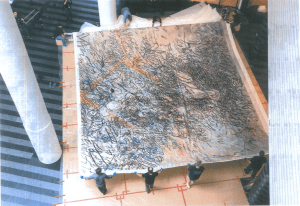
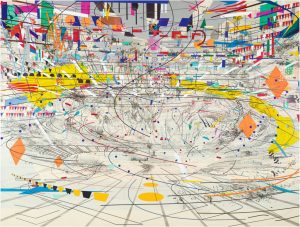

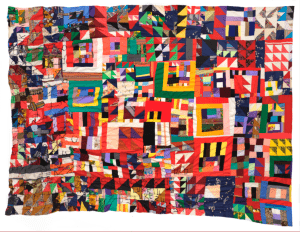


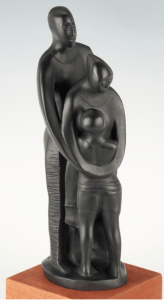
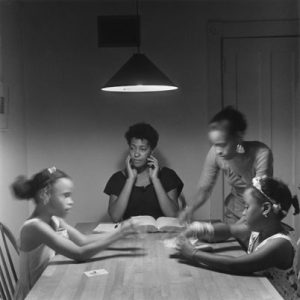


Add a comment to: Nine Favorite African American Women Artists